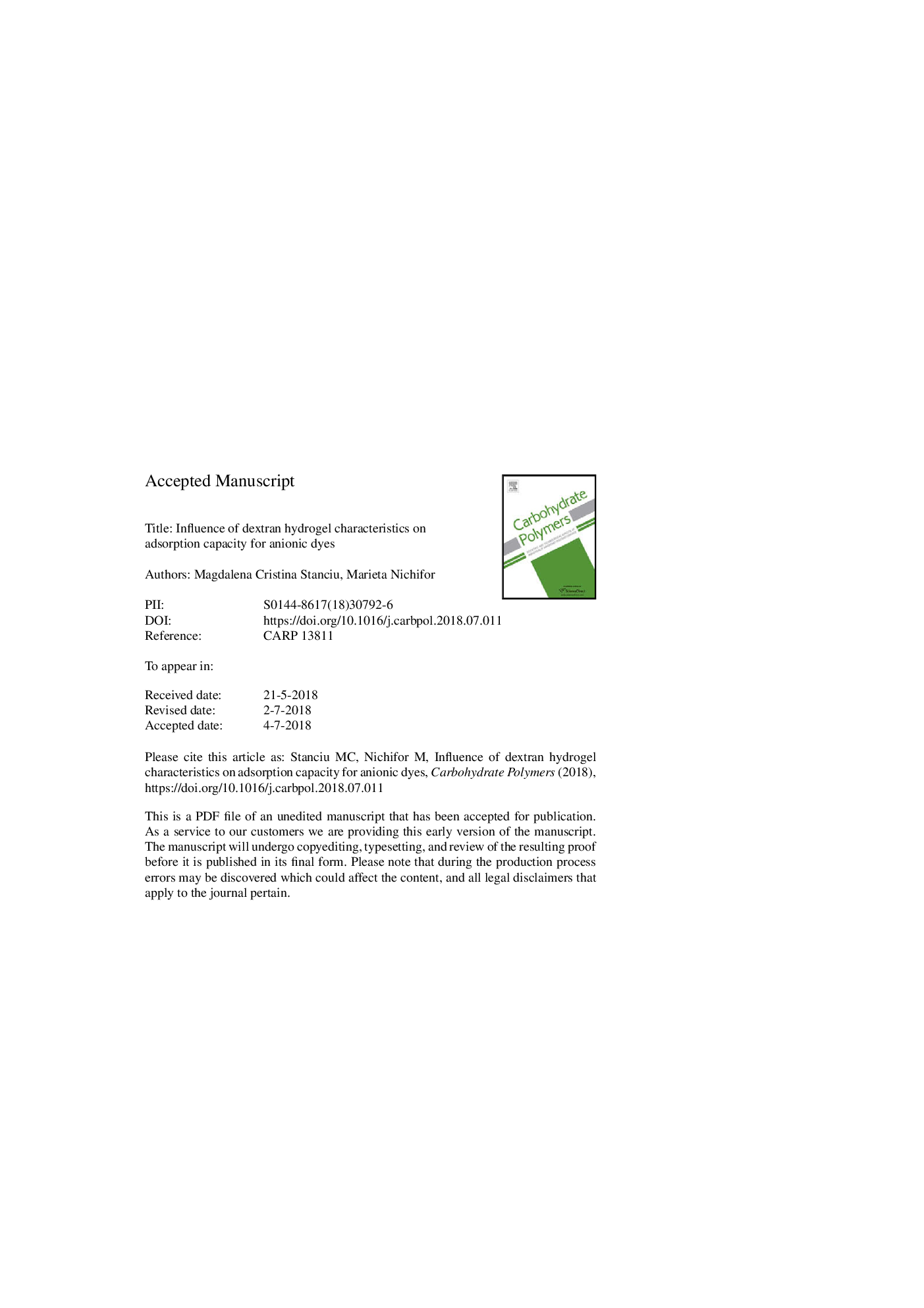| Article ID | Journal | Published Year | Pages | File Type |
|---|---|---|---|---|
| 7781214 | Carbohydrate Polymers | 2018 | 34 Pages |
Abstract
A series of cationic amphiphilic dextran hydrogels with pendent N, N-dimethyl-N-alkyl-N-(2-hydroxypropyl) ammonium chloride pendent groups was obtained with various molar ratios hydrophilic (alkylâ¯=â¯C2)/hydrophobic groups (alkylâ¯=â¯C12 or C16), total content in amino groups (50-68â¯mol%) and water swelling capacity (3-15â¯g water/g dry gel). Adsorption capacity for anionic dyes (Methyl Orange and Rose Bengal) was studied as a function of hydrogel characteristics. Adsorption kinetics was mainly influenced by swelling porosity and dye molecular weight. Equilibrium data showed that the maximum sorption capacity was strongly dependent on hydrophobic segment content, which enhanced the affinity dye-gel (increased Langmuir constant KL) and contribution of ion-exchange to adsorption mechanism, and significantly decreased the maximum uptake of Rose Bengal. The hydrophilic highly swollen hydrogel had the best adsorption capacity for Rose Bengal (1700â¯mg/g) at 25â¯Â°C, and more hydrophobic gels could adsorb 830-900â¯mg Methyl Orange/g, irrespective of the medium temperature.
Related Topics
Physical Sciences and Engineering
Chemistry
Organic Chemistry
Authors
Magdalena Cristina Stanciu, Marieta Nichifor,
